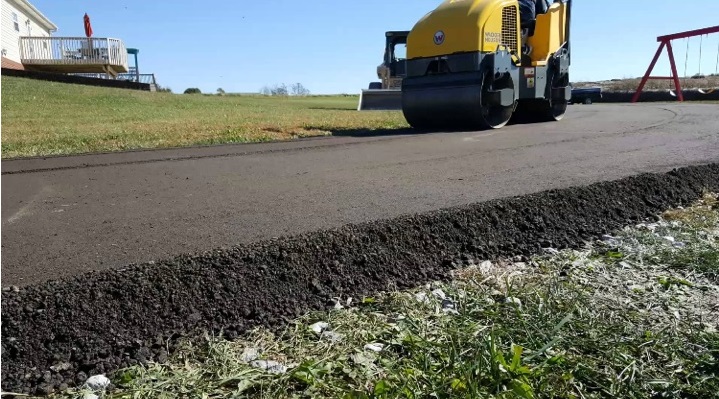How to Know When Your Asphalt Driveway Needs Resurfacing
When your asphalt driveway is first installed, it has a beautiful dark appearance that adds aesthetic appeal to your home, and that fresh, new look is something that stands out well against your house to add wonderful curb appeal. Over time though, that look will fade, and you may find yourself wondering at some point if it’s time for sealcoating or even a new re-surfacing of your driveway. Here are some signs to look for that should help you make the right determination on what kind of maintenance might be appropriate for your asphalt driveway. There are three types of maintenance which you might have to carry out, those being sealcoating, re-surfacing, and a complete re-paving.
Sealcoating your driveway
Regardless of where you live in the country, a good rule of thumb is to sealcoat your driveway every two to four years. Sealcoating is a process which involves applying a tar-based coating over your driveway surface so as to fill in cracks, seal the surface, and protect the sub-layers and foundation. It also helps to prolong the life of your asphalt, so you won’t need to re-surface the driveway so often. You’ll always get the best results if you wait until the temperature is at least 50 degrees Fahrenheit, but below 90 degrees. You should also avoid sealcoating when rain is in the forecast, because dry weather is needed so that the sealcoating adheres properly to the asphalt surface.
Re-surfacing your driveway
When you start to notice that a number of shallow cracks have begun to emerge in your asphalt driveway, that’s a good indicator that it might be time for a re-surfacing. The same is true if you should observe some deeper cracks, or if you’ve had to do fairly frequent patching of the driveway in recent months. At some point, it’s simply no longer cost-effective to keep patching the driveway, and a re-surfacing may then be your best bet. Re-surfacing involves replacing the top layer of your asphalt, and this will generally add another eight to 15 years of life to your driveway.
When you’re wondering whether or not the time has come for re-surfacing, here are some guidelines which may help you to arrive at an appropriate decision. If the foundation of your driveway is still structurally sound, and the driveway itself has been in place for less than 20 years, you probably will not need a complete re-installation of new asphalt, but you can get away with a simple re-surfacing.
Also, you should make sure that any cracks which have shown up are less than two inches deep, and that they’re less than half an inch wide. If you have cracks larger than this, it may not be effective to carry out a re-surfacing, and you may have to go all the way with a full replacement. When less than one-third of your driveway needs repairs, that’s another good sign that re-surfacing will probably be adequate for now, and that you won’t need to invest in a full replacement.
You should be aware of the fact that any repairs you might make to your asphalt driveway will only provide temporary relief, and that eventually water will work its way between the old and the new asphalt, and begin to degrade the pavement again. As long as you’re not constantly having to make these repairs, re-surfacing will probably be adequate. However, when it gets to the point that the necessary repairs keep cropping up month after month, and it’s a constant requirement, that’s when it will be time to face the inevitable need to completely repave your asphalt driveway.

